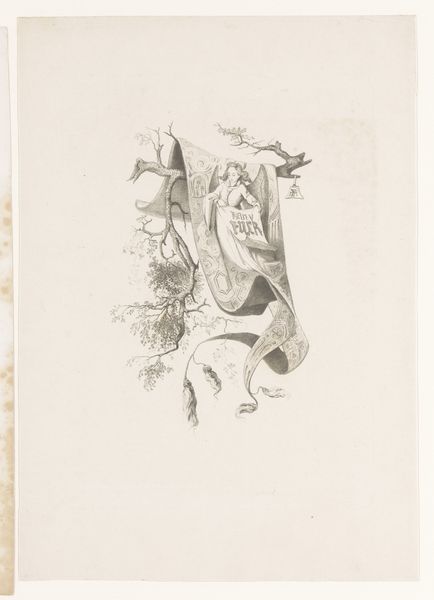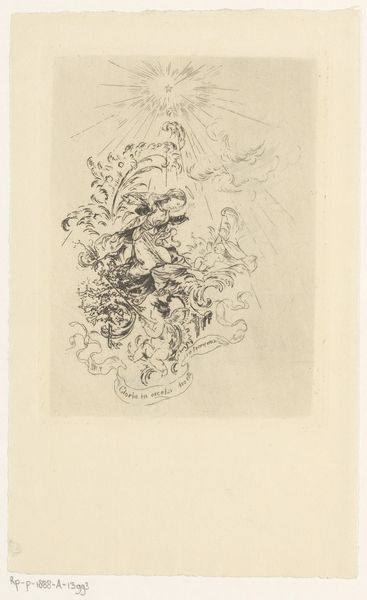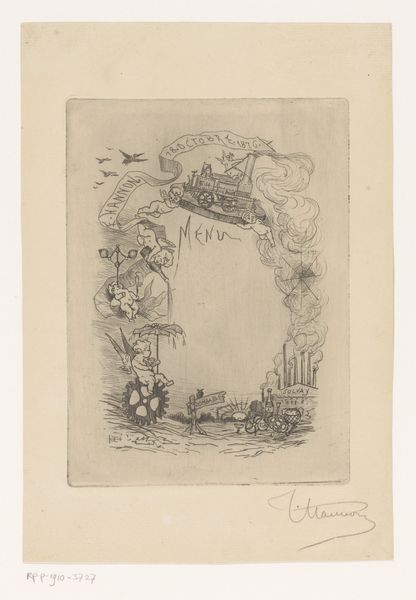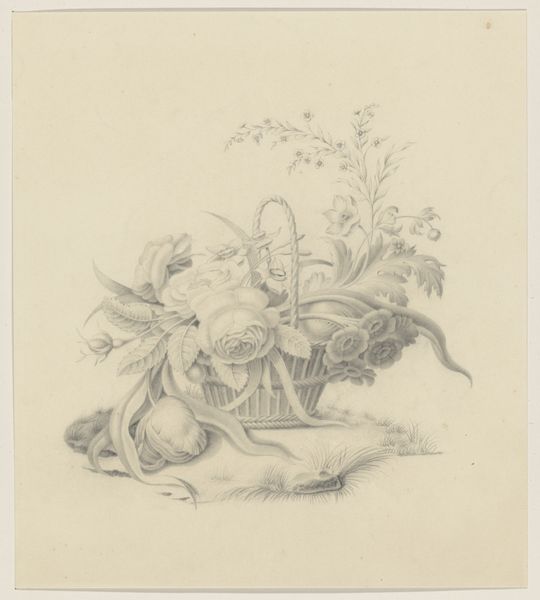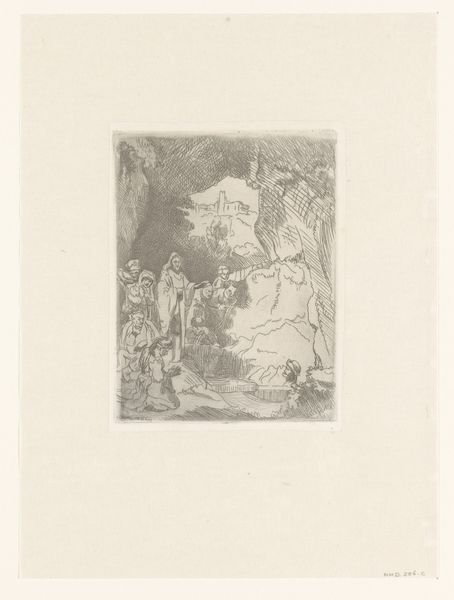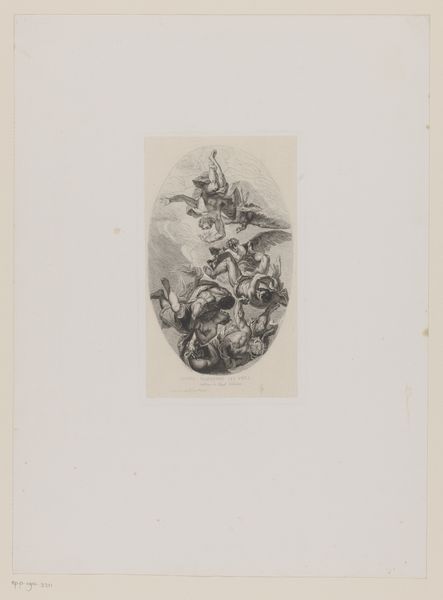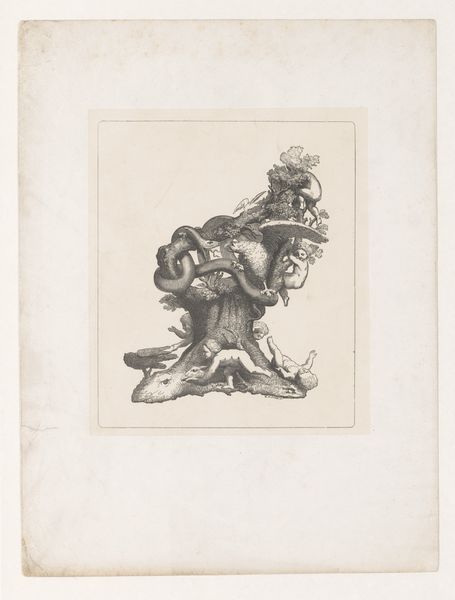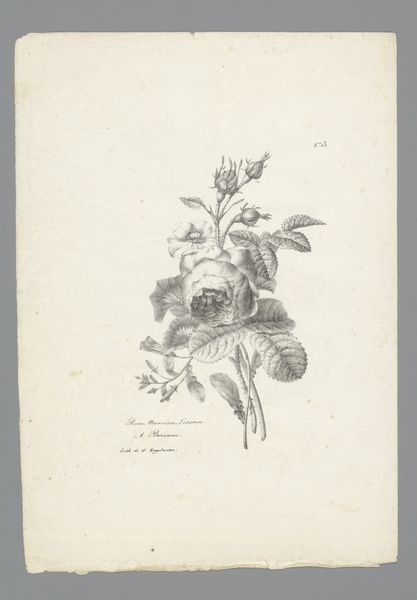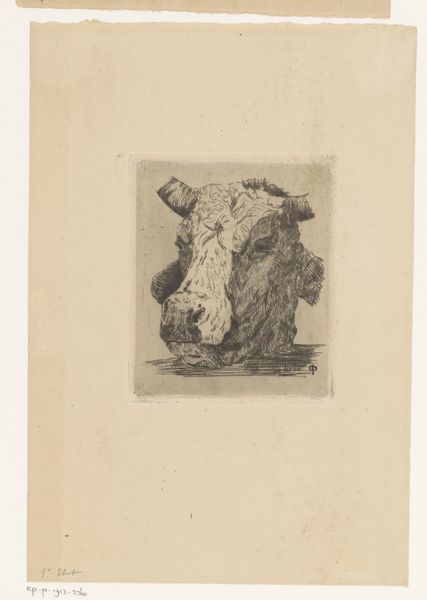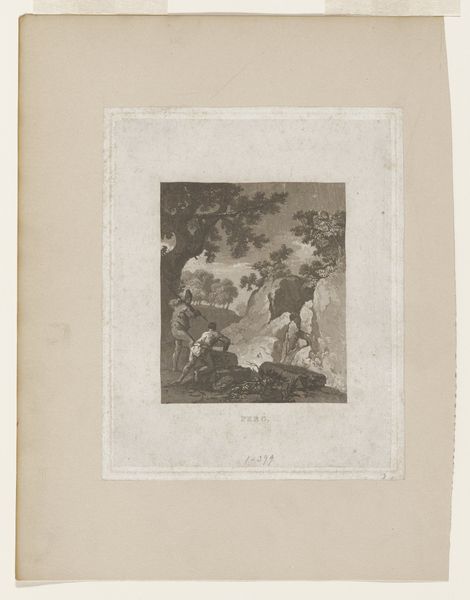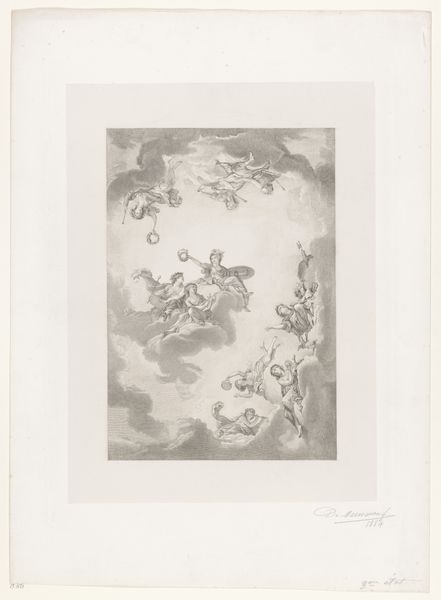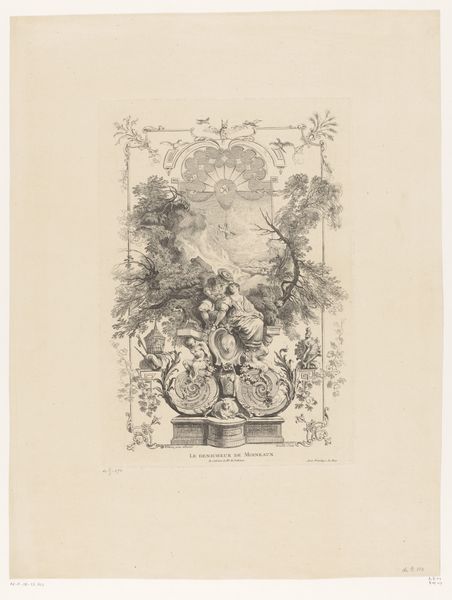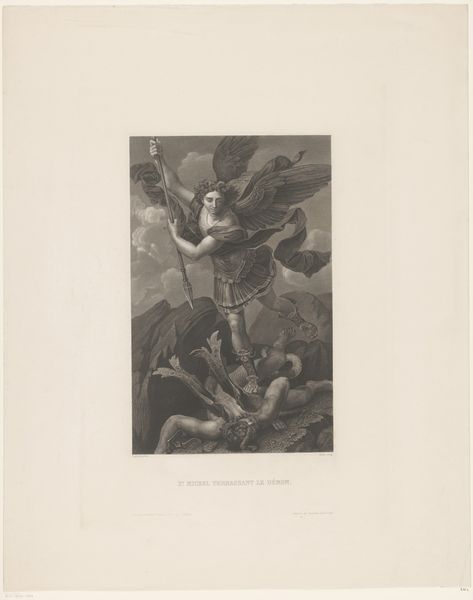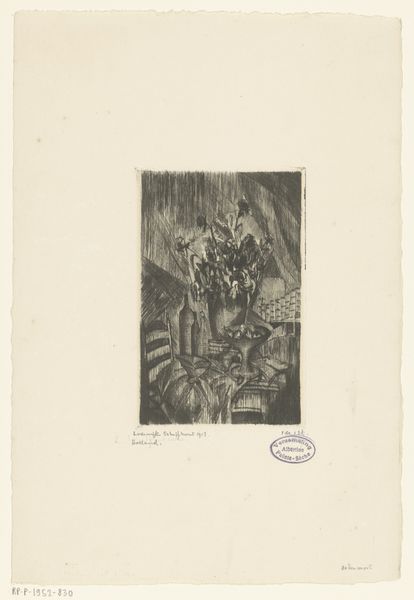
Dimensions: height 331 mm, width 258 mm
Copyright: Rijks Museum: Open Domain
Curator: What a delicate print! We're looking at "Bloemstuk," a work by Hendrik Reekers that likely dates between 1847 and 1883. It is labeled as graphic art, specifically a print, so perhaps we're dealing with lithography here? Editor: My immediate impression is that this print is romantic, bordering on melancholic. The gray palette lends a certain stillness, a faded quality, as though recalling a memory. Curator: It is easy to find it evocative. Flower symbolism has always been so potent! Looking closely, the roses speak of love and the possible addition of forget-me-nots whispers sentiments of remembrance. Even the way they're arranged, spilling out of the vase, might signify emotions overflowing. Editor: Yes, and who receives such bouquets in this historical period? Gender, social status, marital possibilities—the presentation of flowers communicated many expectations and boundaries in the nineteenth century. Think of the language of flowers as an expression available for only the genteel class. Curator: Exactly! In many Western contexts, a bouquet presented to a woman held layers of meaning. Roses, as you suggested, were associated with Venus, thus invoking beauty, but roses also represent a form of mortality, as any flower is meant to fade and ultimately decompose. Perhaps that underpins your reading of melancholy? Editor: Very insightful! Beyond courtship and social norms, domestic settings were a critical space for women. Even this act of display embodies a constructed performance of domesticity and availability. Does the gathering and presenting of blooms reinforce expectations about beauty? Who had the time to do that work, who reaped the benefits, and whose labor goes unacknowledged? Curator: And is the artistic rendering of nature another such reinforcement? Interesting… Thank you for framing this artwork through such complex issues! Editor: It's a joy. Ultimately, I look to such historical artworks for more insight into our social legacies and how far we have — or have not — come in acknowledging issues of labor, gender, and other categories that shaped those historical worlds.
Comments
No comments
Be the first to comment and join the conversation on the ultimate creative platform.
